Free GIF to SVG Online Converter
GIF to SVG free Online Converter allows you to easily convert your animated GIFs into scalable vector graphics. This tool ensures high-quality output, preserving the original color while providing the flexibility of SVG format.
Add a File Converter to your app
Frequently Asked Questions
What is SVG?
SVG stands for Scalable Vector Graphics, which is a file format used to describe two-dimensional vector graphics. It is an XML-based format, meaning the image is defined through code rather than pixels, making it different from raster formats like BMP or PNG.
Key features of SVG include:
- Scalability: SVG images can be resized to any dimension without losing quality, making them ideal for web design and responsive layouts.
- Lightweight: Since SVG uses code to define the image, it often has a smaller file size compared to raster images.
- Editable: SVG files can be directly edited using text editors or specialized tools like Adobe Illustrator, allowing for precise adjustments.
- Interactive: You can embed scripts or animations into SVG images to create interactive graphics for websites or applications.
- Web Compatibility: SVG is widely supported by modern web browsers, making it a popular choice for logos, icons, charts, and illustrations on the internet.
What is GIF?
GIF stands for Graphics Interchange Format, a widely used image format known for its simplicity and support for animations. Here’s what makes GIFs special:
- Animation: GIFs can display multiple frames in a loop, creating short, lightweight animations—perfect for memes, reaction images, and tutorials.
- Small File Size: GIF files are compressed, making them easy to share online, even with limited bandwidth.
- Transparency Support: Like PNG, GIFs can have transparent backgrounds, which is useful for overlays and designs.
- Limited Colors: GIFs are restricted to a palette of 256 colors, which works best for simple graphics but isn’t ideal for high-quality photos.
You’ve probably seen GIFs all over social media or messaging platforms—they’re great for adding humor or emphasis.
What is the benefits of converting GIF to SVG?
Converting a GIF to SVG has several advantages, particularly when you’re working on designs or web projects:
- Scalability: SVG is resolution-independent, meaning it can be resized to any dimensions without losing quality. This is ideal for responsive designs, unlike GIFs, which can become pixelated when scaled.
- Editable Graphics: SVGs are vector-based and can be edited with precision using tools like Adobe Illustrator or Inkscape. You can tweak shapes, colors, and animations easily.
- Smaller File Size: SVGs often result in smaller file sizes for simple graphics or animations, which can improve webpage loading speeds compared to GIFs.
- Interactivity: Unlike GIFs, SVGs allow for interactive features like hover effects, animations, or clickable elements. This makes them more dynamic and engaging for web use.
- Transparency and Clarity: While GIFs support basic transparency, SVGs offer smoother edges and better overall image quality for elements like logos or icons.
- Web Compatibility: Modern web browsers support SVG natively, making them an excellent choice for scalable web graphics.
Can GIF converted to SVG?
You can convert GIFs to SVG using Filestack’s online converter by uploading the file from your computer, Google Drive, Facebook, or a URL, and then downloading the SVG result.
Free Online Image Converters
Supported Cloud Storage Providers

Why Use File Converters?
Simplify your design workflow by quickly converting PSD files into scalable SVG images. Filestack’s advanced conversion and CDN distribution enhance collaboration, reduce delays, and streamline graphics sharing.
What Filestack Can Provide For You
GROUP IMAGES INTO A COLLAGE
URL SCREENSHOT
PDF FILE PROCESSING
DOCUMENT DETECTION
VIRUS SCAN & MALWARE DETECTION
GENERATE A QR CODE
Let’s Get Started.
Just One Integration, One Time…
import * as filestack from 'filestack-js';
const client = filestack.init('YOUR API KEY');
client.upload(fileObject).then(data =>console.log(data.url));gem 'filestack'
client = FilestackClient.new('YOUR_API_KEY', security: security_object)
filelink = client.upload(filepath: '/path/to/file')$ composer require --prefer-dist filestack/filestack-php
use Filestack\\FilestackClient;
$client = new FilestackClient('YOUR_API_KEY');
$filelink = $client-upload('/path/to/file');$ pip install filestack-python
from filestack import Client client = Client("")
params = {'mimetype': 'image/png'}
new_filelink = client.upload(filepath="path/to/file", params=params)
print(new_filelink.url)